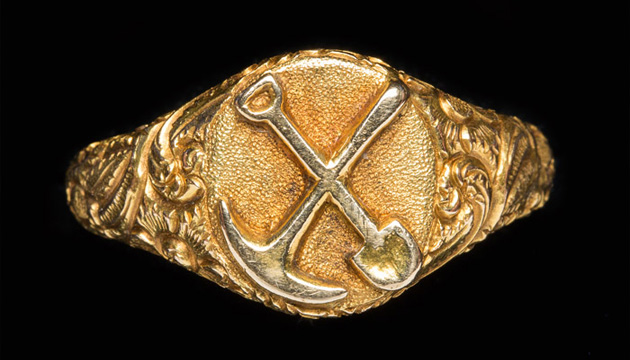In the 19th century, the lottery of the Australian goldfields produced a unique kind of ostentatious jewellery that celebrated the unprecedented rise of the digger.
Story By Ken Eastwood
Toiling long and hard with drooping shoulders and ripped fingernails, the digger on the Victorian goldfields in the 1850s was barely scratching out an existence. His life had always been tough and, by crikey, these years working the goldfields of Ballarat, Bendigo and Castlemaine were no exception.
It was fair enough then that when he found a nugget worth more than he’d made over his entire lifetime it would be a cause for celebration. Imagine cries of “Eureka”, as he bolts into town and celebrates by buying flash clothes for him and his missus, and commissioning a jeweller to make a large golden brooch, complete with a shovel, sluice and pickaxe: “That’ll show those toffy town types. We’re in the money now.”
From mid-April, the Museum of Democracy at Eureka (M.A.D.E) in Ballarat, Vic, is displaying more than 150 pieces of such jewellery from 19th-century goldfields – jewellery that has been described as “subversive” by one of the contributors to the exhibition, Dr Linda Young. “Gold caused moral panic in Melbourne – because of the lottery aspect that anyone might get rich,” says the senior lecturer in cultural heritage and museum studies at Deakin University. “It was profoundly disturbing to the establishment. It went against all the Victorian and Christian values of the time.”
It is believed to be the first time in the world that lower-class manual work was celebrated and flaunted in the jewellery of the day. “It’s really in your face to put a pick and shovel in it,” Linda says. “This is work and it’s manual work, and manual work in the Victorian era is a no-no. You don’t flaunt it. There aren’t blacksmith brooches or farm labour brooches.”
This story excerpt is from Issue #106
Outback Magazine: Apr/May 2016










